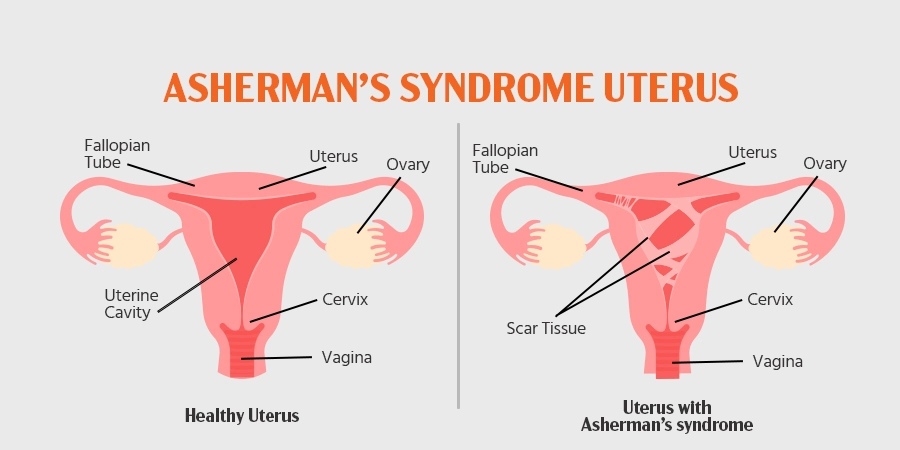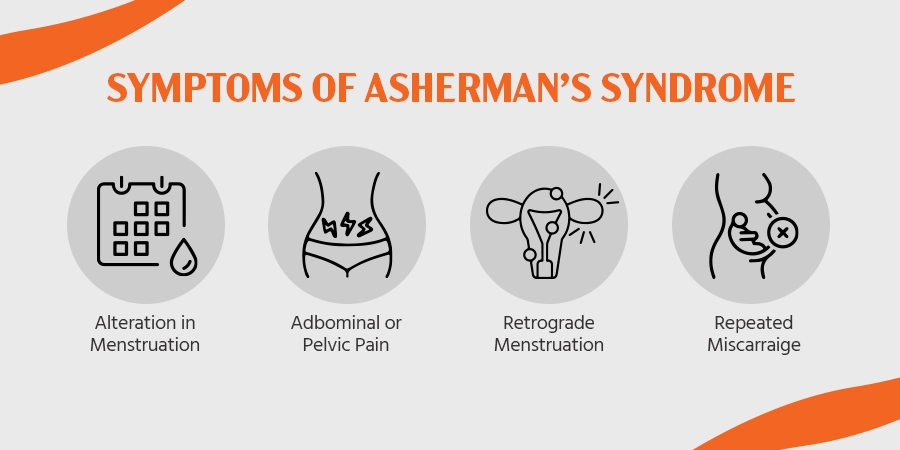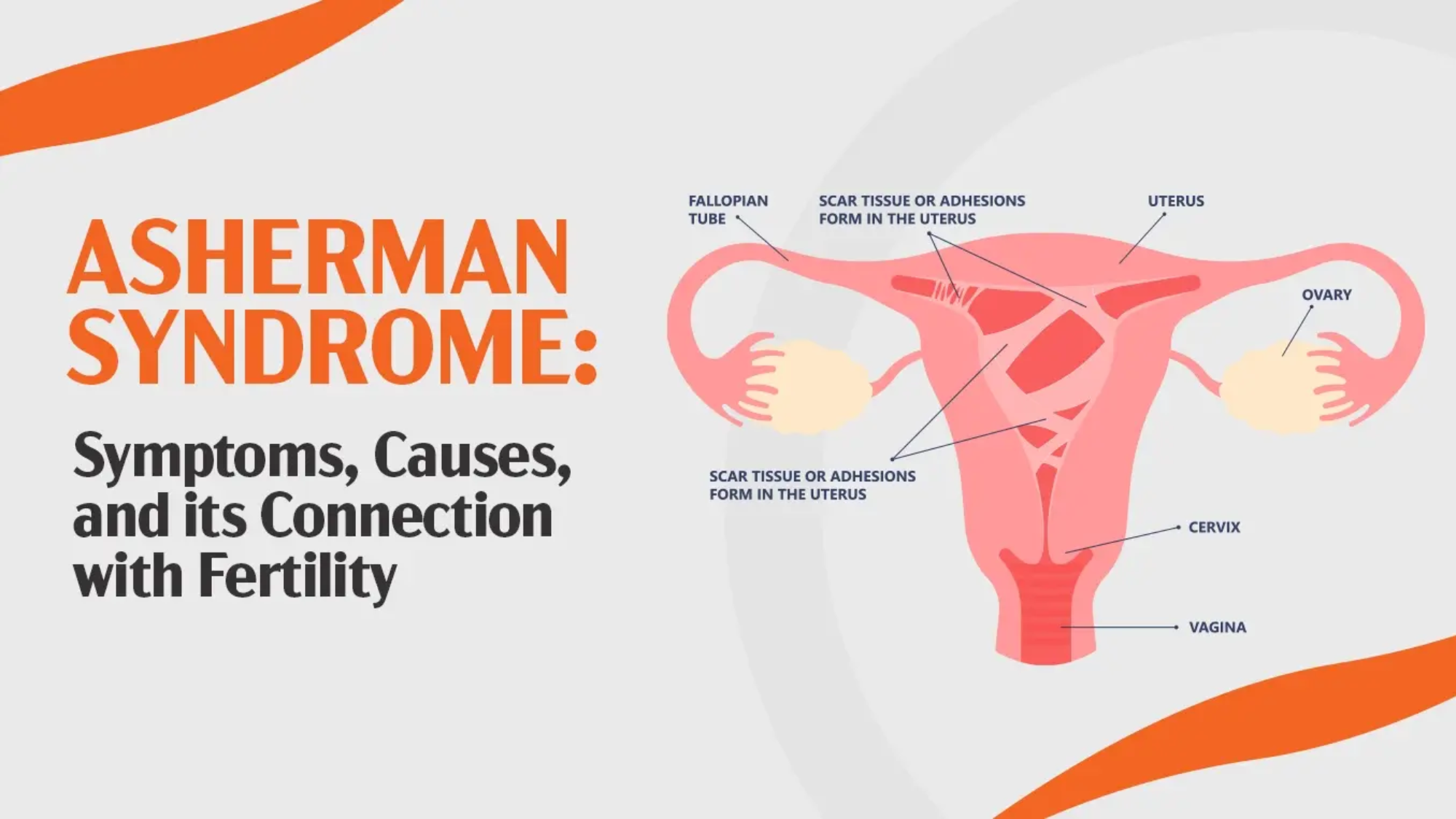The gradual decrease in uterine space has the potential to impact various aspects of reproductive health and fertility.
Table of Content
1.0 What is Asherman’s Syndrome?
2.0 How common is Asherman’s Syndrome?
3.0 Who is more vulnerable to Asherman’s Syndrome?
4.0 Is Asherman’s Syndrome hereditary?
5.0 What are the most common symptoms of Asherman’s Syndrome?
6.0 What is the cause behind Asherman’s Syndrome?
7.0 Pregnancy and Asherman’s Syndrome: Can someone with Asherman’s Syndrome get pregnant?
What is Asherman’s Syndrome?

- Asherman’s Syndrome is a condition where the inside of a uterus develops scar tissues thereby gradually decreasing the space inside the uterus.
- This condition commonly occurs as a consequence of underlying complications caused by cancer treatments or other medical procedures.
- Asherman’s Syndrome can lead to various health complications. These complications most commonly include unusual uterine bleeding and pelvic pain.
- Asherman’s Syndrome is a condition that can be treated. Seeking treatment for the same holds the promise of relieving any symptoms that one might be facing.
How common is Asherman’s Syndrome?
- Asherman’s Syndrome is usually considered a rare disease. It is however hard to reveal an accurate number of people who might have it for it can often go undiagnosed.
- For instance, a lot of people do not experience any symptoms or difficulty despite having Asherman’s Syndrome.
- Since their symptoms may never come to light, they may never seek treatment for the same.
Who is more vulnerable to Asherman’s Syndrome?
Asherman’s Syndrome has been labelled an acquired ailment. The reason behind the same is quite simple, it is usually a consequence of a medical procedure that leads to the development of scar tissue inside the uterus.
Asherman’s Syndrome can additionally be acquired from infections, various surgeries and certain cancer treatments.
People with the following medical history are usually more likely to get Asherman’s Syndrome:
- People who have had a surgical procedure performed on their uterus. These procedures include the likes of hysteroscopy, D&C, C-Section and more.
- Someone has a history of pelvic infections.
- Someone who has been treated for cancer.
Is Asherman’s Syndrome hereditary?
Asherman’s Syndrome is generally regarded as an acquired condition and not a hereditary one. People get it as a side effect of another underlying condition or a previous surgical procedure.
What are the most common symptoms of Asherman’s Syndrome?
While some people with Asherman’s Syndrome may not experience any symptoms a all, some might experience the following:

- Hypomenorrhea:Hypomenorrhea is a condition where an individual assigned female at birth experiences abnormally low bleeding during their menstrual cycles.
- Amenorrhea:Amenorrhea is a condition characterised by an unusually low or no bleeding at all during one’s menstrual cycle.
- Unusually sharp cramping or pelvic pain.
- Difficulty in conception or difficulty in staying pregnant.
- While for a lot of people, Asherman’s Syndrome might go unnoticed, many might experience an unusual pain in their pelvis region and many might experience various menstrual abnormalities.
What is the cause behind Asherman’s Syndrome?
Asherman’s Syndrome is caused when adhesions start building up inside an individual’s uterus. These adhesions are made up of scar tissues that commonly develop as a consequence of an underlying pelvic infection or as an after effect of certain cancer treatments. Another cause behind Asherman’s Syndrome can be some kind of surgical procedure that an individual might have gone through.
D&C (Dilation & Curettage)
Dilation & Curettage is a procedure wherein the cervix is opened surgically so as to remove tissue from the uterus. While the scraping of this tissue doesn’t usually cause any discomfort, an underlying infection might lead to certain complications.
Operative Hysteroscopy
Operative Hysteroscopy is a surgical procedure performed to cut off and remove fibroids from the uterus.
C-Section (Cesarean Section)
C-Section is a surgical procedure performed to deliver a child. In certain cases, a C-Section surgery can cause the development of scar tissue. The only place where this could happen, is the area where stitches are put so as to stop the bleeding. Other than a few exceptions, it is very rare for a C-Section surgery to cause Asherman’s Syndrome.
Pregnancy and Asherman’s Syndrome: Can someone with Asherman’s Syndrome get pregnant?
Yes, someone who has Asherman’s Syndrome can get pregnant. In case a health provider cites Asherman’s Syndrome as the root cause behind an individual’s infertility, they should not lose hope.
The reason behind the same is quite simple, symptoms of Asherman’s Syndrome can be treated thereby increasing one’s chance of successful conception.
Asherman’s Syndrome can however impact conception in some cases. The adhesions within the uterus, often resulting from underlying pelvic infections, previous surgeries, or certain cancer treatments, may hinder the implantation of a fertilised egg.
This condition, coupled with symptoms like hypomenorrhea, amenorrhea, and pelvic pain, underscores the challenges that individuals may face in conceiving.
Banker IVF understands the complexities of Asherman’s Syndrome and provides personalised guidance and treatments to enhance the chances of successful conception for those navigating this condition.

